Meta Description: Discover a comprehensive maintenance guide for cryogenic oil dewaxing equipment. Learn step-by-step troubleshooting tips to address common failures and ensure optimal performance.
Introduction
Cryogenic oil dewaxing is a critical process in the production of high-quality base oils and waxes, but it requires meticulous maintenance to ensure consistent performance. Equipment failures can lead to costly downtime and reduced efficiency. In this article, we’ll provide a step-by-step guide to troubleshooting common failures in cryogenic oil dewaxing equipment, helping you maintain optimal operations and minimize disruptions.
Table of Contents
1. What is Cryogenic Oil Dewaxing?
2. Why Maintenance is Crucial for Cryogenic Dewaxing
3. Common Failures in Cryogenic Oil Dewaxing Equipment
4. Step-by-Step Troubleshooting Guide
5. Preventive Maintenance Tips for Long-Term Reliability
6. Choosing the Right Maintenance Partner
7. FAQs About Cryogenic Oil Dewaxing Maintenance
1. What is Cryogenic Oil Dewaxing?
Cryogenic oil dewaxing is a refining process that uses extremely low temperatures to remove wax from hydrocarbon feedstocks. This method is essential for producing base oils and waxes with superior low-temperature properties and performance.
2. Why Maintenance is Crucial for Cryogenic Dewaxing
Proper maintenance of cryogenic oil dewaxing equipment is vital because it:
· Prevents Downtime: Reduces the risk of unexpected equipment failures.
· Ensures Efficiency: Maintains consistent performance and high yields.
· Extends Lifespan: Minimizes wear and tear, prolonging equipment life.
· Improves Safety: Reduces the risk of accidents and equipment-related hazards.
3. Common Failures in Cryogenic Oil Dewaxing Equipment
· Chilling Unit Malfunctions: Inefficient cooling or temperature fluctuations.
· Filtration System Blockages: Clogged filters reducing wax removal efficiency.
· Solvent Leaks: Loss of solvent due to faulty seals or connections.
· Pump Failures: Reduced flow rates or complete breakdowns.
· Control System Errors: Inaccurate monitoring or control of process parameters.
4. Step-by-Step Troubleshooting Guide
Step 1: Chilling Unit Malfunctions
· Check Temperature Settings: Ensure the unit is set to the correct temperature.
· Inspect Refrigerant Levels: Low refrigerant can cause inefficient cooling.
· Examine Compressor Functionality: Verify that the compressor is operating correctly.
Step 2: Filtration System Blockages
· Inspect Filters: Replace or clean clogged filters.
· Check Flow Rates: Ensure optimal flow rates to prevent blockages.
· Examine Feedstock Quality: Poor-quality feedstock can cause frequent clogs.
Step 3: Solvent Leaks
· Inspect Seals and Connections: Replace worn-out seals and tighten loose connections.
· Monitor Solvent Levels: Regularly check and replenish solvent levels.
· Use Leak Detection Tools: Identify and repair leaks promptly.
Step 4: Pump Failures
· Check for Blockages: Clear any obstructions in the pump or pipelines.
· Inspect Motor Functionality: Ensure the motor is functioning correctly.
· Monitor Pressure Levels: Abnormal pressure can indicate pump issues.
Step 5: Control System Errors
· Calibrate Sensors: Ensure sensors are accurately measuring process parameters.
· Update Software: Use the latest software versions for optimal performance.
· Test Backup Systems: Ensure backup systems are operational in case of failures.
5. Preventive Maintenance Tips for Long-Term Reliability
· Regular Inspections: Conduct routine checks to identify potential issues early.
· Timely Replacement of Wear Parts: Replace filters, seals, and gaskets before they fail.
· Proper Lubrication: Use the correct lubricants for moving parts to reduce friction and wear.
· Cleaning and Debris Removal: Clean equipment regularly to prevent wax and solvent buildup.
· Training and Safety Protocols: Train operators on proper maintenance procedures and safety practices.
6. Choosing the Right Maintenance Partner
When selecting a maintenance partner, consider:
· Experience: Look for providers with expertise in cryogenic oil dewaxing equipment.
· Comprehensive Services: Choose partners offering inspections, repairs, and training.
· Response Time: Ensure quick and reliable support for emergencies.
· Compliance Knowledge: Verify adherence to safety and environmental regulations.
7. FAQs About Cryogenic Oil Dewaxing Maintenance
Q: How often should cryogenic oil dewaxing equipment be inspected?
A: Monthly inspections are recommended, with more frequent checks for high-usage equipment.
Q: What’s the most common cause of pump failures?
A: Blockages in the pump or pipelines are the most common cause of failures.
Q: Can preventive maintenance reduce operational costs?
A: Yes, preventive maintenance minimizes downtime, repairs, and energy waste, leading to significant cost savings.
Conclusion
Effective maintenance is the key to ensuring the longevity and efficiency of your cryogenic oil dewaxing equipment. By following this step-by-step troubleshooting guide and implementing preventive maintenance practices, you can minimize disruptions, reduce costs, and maintain optimal performance.
CTA: Ready to optimize your cryogenic oil dewaxing maintenance?[Contact Our Experts] for a free consultation and tailored maintenance solutions.



